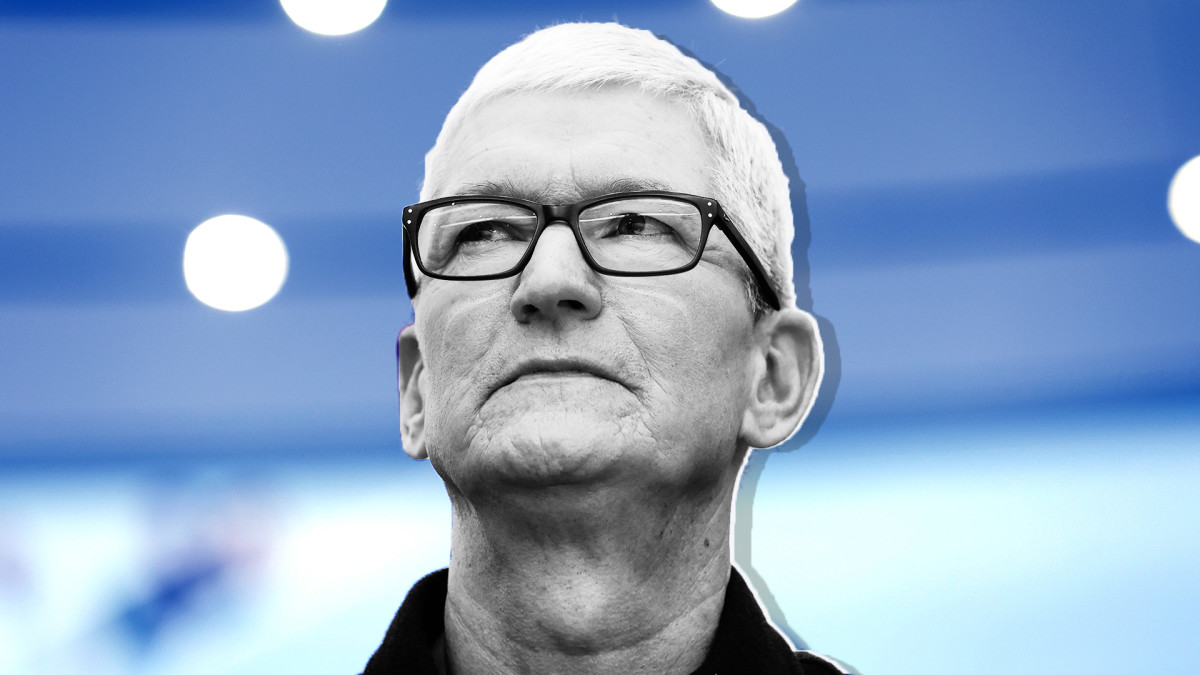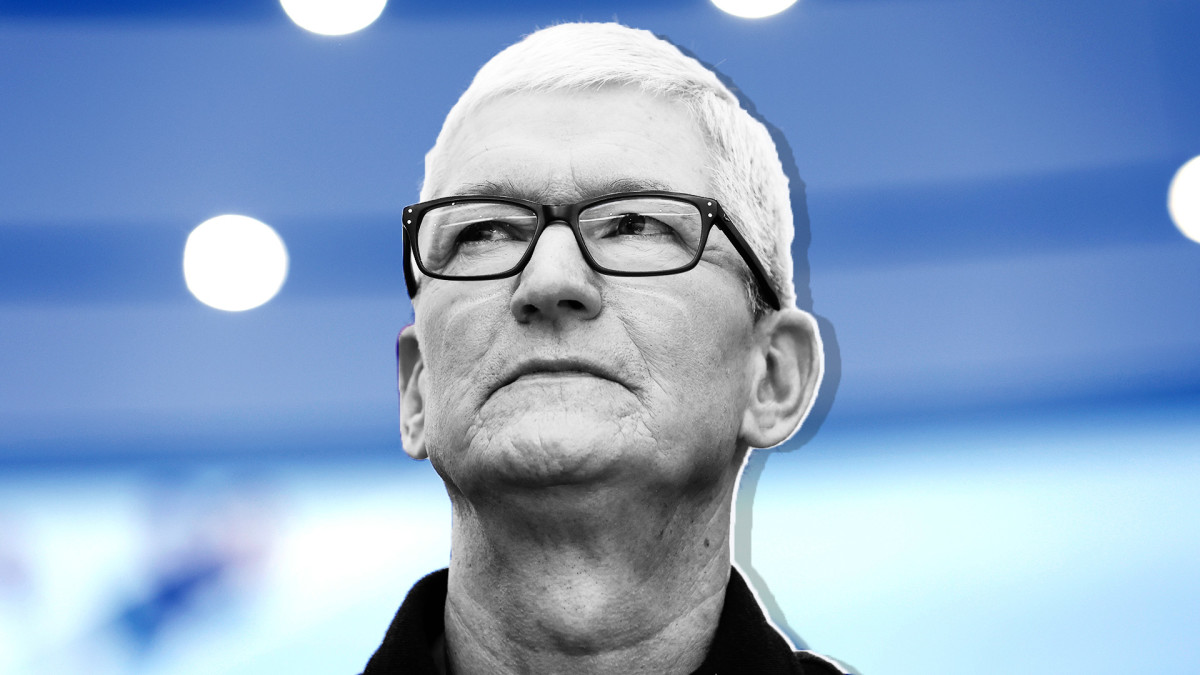## Wait, What? Analyst Slams Brakes on Apple Stock After iPhone Roadblock Apple, the tech titan that seemingly can do no wrong, just got hit with a reality check. A top analyst has slashed their stock price target, citing a major challenge facing Apple’s crown jewel: the iPhone. Is this the beginning of the end for Apple’s reign? Or just a temporary bump in the road? We break down the analyst’s concerns and what it means for your Apple portfolio. Buckle up, folks, it’s about to get interesting.
Factors Affecting Revenue Forecasts

Revenue forecasts for Apple have been heavily impacted by a myriad of factors, including tariff implications and delays in AI strategy execution. A recent analysis from Gizmoposts24 indicates that Apple’s revenues are particularly sensitive to both consumer demand and the economic environment. The drop in iPhone 16 sales is a direct result of softer demand, which has been exacerbated by the delayed rollout of the advanced Siri digital assistant. This delay has not only affected the iPhone sales but has also impacted the overall product ecosystem, reducing the perceived value proposition for new and existing customers.
The iPhone, a cornerstone of Apple’s revenue, has seen a decline in sales, with revenues from the smartphone slipping by 0.8% to $69.14 billion in the December quarter. This decline, coupled with the delayed roll-out of Siri’s advanced features, has significantly dampened investor sentiment. As a result, Apple’s financial health is under scrutiny, with many analysts and investors looking for signs of recovery or innovative strategies to counteract these challenges.
Cost Implications of Tariffs
Impact of Potential U.S. Tariffs on Asia-Made Goods
The potential imposition of additional tariffs on goods manufactured in Asia could further complicate Apple’s financial outlook. This is particularly significant as a substantial portion of Apple’s products are manufactured in China and other East Asian countries. Increased tariffs would lead to higher manufacturing and shipping costs, which could either be absorbed by Apple or passed on to consumers in the form of higher prices. This scenario could reduce demand, especially in a market where consumer spending is already constrained.
Apple’s Strategies to Mitigate Cost Increases
To mitigate these cost increases, Apple has been exploring various strategies, including:
- Shifting manufacturing to countries with lower tariff rates or no tariffs at all, such as India and Vietnam.
- Investing in supply chain diversification to reduce dependency on any single region, thereby spreading the risk of economic or political instability.
- Implementing cost-saving measures within its operations, such as using more efficient logistics and supply chain management techniques.
Broader Market and Competitive Landscape
Competitor Analysis
Apple’s rivals, particularly Samsung and Huawei, have been capitalizing on Apple’s current challenges. Samsung, for instance, has been aggressive in launching new models with cutting-edge features, aiming to lure customers away from Apple. Huawei, despite facing its own geopolitical challenges, has been focusing on innovation and value propositions that directly compete with Apple’s offerings.
These competitors are leveraging the delays in Siri’s advanced features and the mixed reception to the iPhone 16 to gain market share. This competitive pressure is forcing Apple to re-evaluate its product strategy and innovation pipeline to regain its market leadership.
Market Share Implications
Apple’s market share in the smartphone segment has seen a slight dip, with its competitors gaining ground. According to recent data, Apple’s global smartphone market share decreased from 13.9% to 12.7% in the last quarter, while Samsung’s share increased from 19.8% to 21.5%. This shift in market share, though modest, reflects a broader trend where Apple is losing ground to more aggressive competitors in key markets, particularly in emerging economies.
Consumer Behavior and Adoption
Consumer reaction to the delayed rollout of Apple Intelligence has been mixed, with some users expressing disappointment in the lack of advanced features. This sentiment is reflected in lower upgrade rates, with up to 50% of iPhone 16 non-upgraders citing the delay as a primary reason. On the other hand, the brand loyalty and perceived quality of Apple products continue to support a strong base of loyal users who are less likely to switch to competitors.
However, the long-term impact on brand perception and consumer loyalty remains a concern. If Apple fails to address these delays and market challenges effectively, it could see a sustained erosion in customer loyalty, potentially leading to long-term market share losses.
Strategic Moves and Future Outlook
Potential Leadership Changes
Speculations about leadership changes within Apple’s AI division are gaining traction. Rumors suggest that Apple CEO Tim Cook might be considering a leadership overhaul in the AI department to bolster the company’s AI capabilities and strategic direction. The potential reshuffling could lead to significant changes in the company’s approach to AI and product development, with immediate implications for innovation and product launch timelines.
Impact on Company Strategy and Innovation
Leadership changes, if they occur, would likely lead to a reevaluation of Apple’s AI and broader product strategy. The company might place more emphasis on AI integration across its products, including the iPhone, iPad, and Apple Watch. This strategic pivot could help Apple regain its competitive edge in the highly tech-driven market.
Future AI and Product Strategy
Apple is likely to focus on integrating AI more seamlessly into its product lineup to enhance user experience and differentiate its offerings. Upcoming AI features and product releases could include:
- Advanced voice and gesture recognition in the next version of the Apple iPhone.
- Enhanced personalization features in the Apple Watch, using AI to better understand and predict user behaviors and preferences.
- Improved AI-driven recommendations and services through the App Store and Apple TV+.
These upcoming AI-driven features could help to address current challenges by providing new value propositions to consumers and investors alike.
Practical Aspects for Investors
Investment Recommendations
According to Morgan Stanley analyst Erik Woodring, the recent overhaul of his price target on Apple stock to $252 per share, down from $275, reflects the added costs of tariffs and the delays in AI strategy. Woodring suggests that current investors should brace for potential short-term volatility due to these challenges.
For potential investors, the current scenario presents both risks and opportunities. Investors are advised to closely monitor the company’s progress in mitigating tariff costs and the rollout of new AI features. Additionally, a deeper analysis of the competitive landscape and consumer adoption trends is recommended to make informed investment decisions.
Risk and Opportunity Analysis
Investors should be aware of the risks associated with increased tariffs, which could lead to higher operational costs. However, there are also significant opportunities, such as the potential for increased innovation and product differentiation through AI advancements. The risk of leadership changes and subsequent strategy shifts should be considered, as these could impact the execution of long-term plans.
Opportunities lie in Apple’s ability to leverage its strong brand and loyal customer base to weather these challenges. Additionally, strategic investments in new markets and innovative technologies could position Apple for long-term growth, potentially offsetting the current short-term downturn.
Conclusion
Apple Stock Price Target: Shifts in the Wind
The latest analyst overhaul of Apple’s stock price target has sent shockwaves through the tech industry, highlighting the key iPhone challenge that has been casting a shadow over the Cupertino giant’s dominance. According to the article, top analysts have been forced to reassess their targets, with many now predicting a decline in Apple’s stock price. This shift is largely attributed to concerns over the company’s ability to maintain its market share in the face of growing competition from rivals such as Samsung and Huawei. The article also notes that Apple’s expansion into new product categories, such as wearables and services, has not been as seamless as expected, further exacerbating the challenges facing the company.
The significance of this development lies in its potential impact on Apple’s financial performance and its ability to maintain its position as a leader in the tech industry. If analysts are correct, a decline in Apple’s stock price could have far-reaching consequences, including increased pressure on the company to innovate and adapt to changing market conditions. Furthermore, the shift in analyst sentiment could also lead to a decrease in investor confidence, potentially affecting Apple’s ability to raise capital and fund its future growth initiatives. As we look to the future, it will be interesting to see how Apple responds to these challenges and whether the company can maintain its position as a leader in the tech industry.
As the tech landscape continues to evolve at a breakneck pace, one thing is clear: Apple’s success is no longer guaranteed. As the company faces mounting challenges, it will be up to its leadership to navigate these waters and ensure that the Apple brand remains synonymous with innovation and excellence. With the future of the iPhone hanging precariously in the balance, one thing is certain: the stakes have never been higher for the world’s most valuable company.



Add Comment